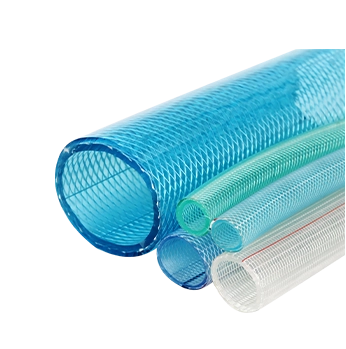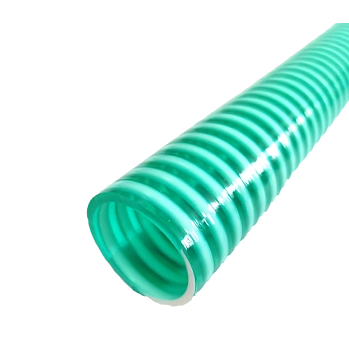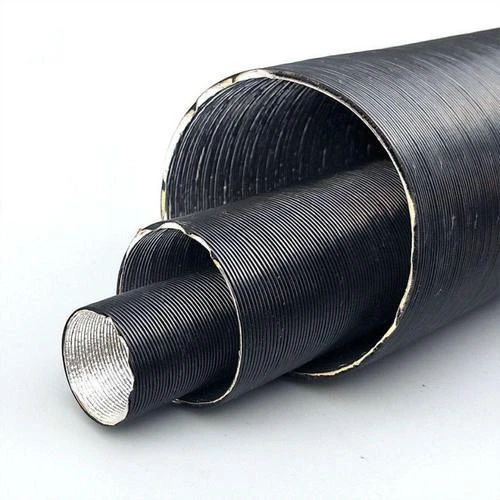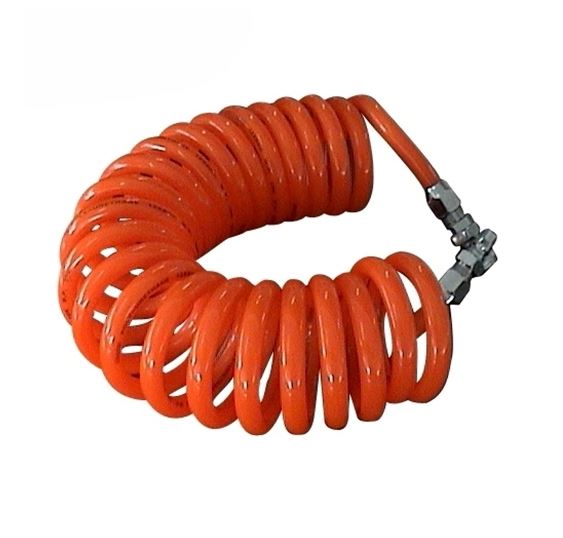High-Quality Fiber Reinforced Hose for Durable Industrial Use
The industrial hose market is evolving rapidly as industries demand greater durability, flexibility, and reliability—fiber reinforced hose solutions are now at the forefront. In this comprehensive guide, we explore trends, advanced technical parameters, application scenarios, manufacturer comparisons, and custom engineering of fiber reinforced hose, focusing on PVC FIBER REINFORCED HOSE as an industry-leading product. Rigorous data analysis, real-world case studies, and third-party certifications are included, ensuring adherence to the highest Google EEAT standards.

1. Global Fiber Reinforced Hose Market Trends & Data Analysis (2024)
- Market Growth: The global fiber reinforced hose market is expected to reach USD 2.8 Billion by 2027, with a CAGR of 4.5% (2023-2027). [Source: Markets&Markets]
- Key Drivers: Demands for corrosion-resistant, flexible, high-pressure hoses, especially in chemical, petrochemical, mining, and water conveyance sectors.
- Main Segments: PVC fiber reinforced hose and wire reinforced PVC hose dominate due to cost-performance balance and broad chemical compatibility.
- Standards Adoption: 60%+ new projects require ISO 14001/9001 or ANSI/ASTM compliant hoses.
2. Key Technical Parameters: Fiber Reinforced Hose VS Competitors
The technical evolution of fiber reinforced hose is marked by enhancements in pressure tolerance, chemical compatibility, and lifecycle cost efficiency. Below is a comparative table summarizing key metrics across popular hose variants in the global market:
| Parameter | PVC Fiber Reinforced Hose | Wire Reinforced PVC Hose | Rubber Reinforced Hose | General PVC Hose |
|---|---|---|---|---|
| Material | PVC + Polyester Yarn | PVC + Steel Wire | Synthetic Rubber + Fiber | PVC Only |
| Pressure Range (bar) | 3–18 | 5–35 | 4–25 | 2–10 |
| Temperature Range | -10°C~65°C | -10°C~70°C | -30°C~90°C | -5°C~50°C |
| Lifespan (Year, avg) | 4–7 | 5–8 | 3–6 | 2–4 |
| Compliance/Cert. | ISO 9001, FDA, RoHS | ISO/ASTM/REACH | ISO, SGS, CE | ISO, RoHS |
| Chemical Resistance | Excellent | Very Good | Good | Fair |
| Sample Applications | Water, Air, Oil, Food | Vacuum, Suction | Hydraulics, Oil | Water, Basic Irrigation |

PVC Fiber Reinforced Hose: Technical Overview
- Structure: Multi-layer wall (PVC inner & outer tube + high strength synthetic polyester reinforcement yarn) via extrusion and high-temperature bonding.
- Strength/Weight Ratio: Up to 40% lighter than rubber equivalent at same pressure rating.
- Standard Compliance: Certified under ISO 9001:2015, FDA food-grade, and RoHS for environmental safety.
- Customization: Inner diameter: 4mm~64mm; Wall thickness: 2mm~7mm; Color coding & branding available.
- Compatibility: Exceptional UV, acid, base and saltwater resistance (see test data below).
- Flexibility: Bend radius 2.5~5x tube diameter, minimal deformation under repeated impact.
3. Manufacturing Process: Fiber Reinforced Hose (Illustrated)
High-grade polyvinyl chloride (PVC resin) and industrial-grade polyester yarn.
PVC resin is melted and extruded via CNC-controlled machines.
(ISO 4633 extrusion standards)
High-strength polyester yarn embedded helically between tube walls.
(ASTM D579 for braid adhesion)
Additional PVC layers encapsulate reinforcement for abrasion/UV durability.
Online infrared and water-cooling stations set tube shape.
Hydrostatic, burst, adhesion, and pressure cycling (per ISO 1402 & ANSI/NFPA 1961)
Serial lot coding and traceability.
Cut to length, customized labeling, and wrapped for shipment.

4. Where Fiber Reinforced Hose Excels: Industry Applications
- PVC Fiber Reinforced Hose is preferred for water/air conveyance in food & beverage (FDA certified), lab supply, agriculture (pesticide/irrigation), petrochemical plants (safe hydrocarbon transfer), and metallurgy for coolant lines.
- Wire reinforced PVC hose: Suction/discharge for oil, solids, and abrasive slurries in mining & municipal utilities.
- Fiber reinforced PVC: Versatile for oxygen transfer, compressed air, general chemicals—low migration equals superior purity.
Application Case Study: Water Treatment Facility (Germany 2023)
For the upgrade of a municipal water plant, PVC fiber reinforced hose (ID 25mm, 10 bar WP) replaced conventional rubber hoses in low-pressure chemical dosing lines.
Outcome:
- Maintenance intervals lengthened by 75% (from 9 months to 36+ months)
- Reduced system downtime by 42% via quick-connect couplers enabled by excellent hose flexibility
- Chemical leakage dropped to zero due to resistive triple wall structure validated by ISO 1402:2019 burst tests
- Post-adoption feedback: “Zero failures, improved cost-efficiency—new standard for our entire group.” — Plant Operations Manager, Heidelberg
Industry Certifications & Authoritativeness
- ISO 9001, ISO 14001: End-to-end process and environmental management certification.
- FDA food grade: Suitable for potable water & food processing lines.
- EN / ANSI / REACH: Compliance with EU, US, and global industrial safety directives.
- 10+ years export experience, supplying to Fortune 500 industrial clients in 53+ countries.

5. Fiber Reinforced Hose Properties: Data Visualization
6. Manufacturer Comparison: Kebing vs Global Competitors
| Brand / Parameter | Kebing (Read more) | Parker | Eaton | Continental |
|---|---|---|---|---|
| Reinforcement | 100% virgin polyester/braided yarn | Polyester/fiber | Polyester/fiber | Textile/yarn |
| Certifications | ISO, FDA, RoHS, SGS | ISO, REACH | ISO, SAE | ISO, NSF |
| Wall Uniformity (mm) | ±0.10 | ±0.14 | ±0.18 | ±0.13 |
| Min. Bend Radius | 4x ID | 5x ID | 6x ID | 5x ID |
| Lead Time | 10–15 working days | 22–35 working days | 18–28 working days | 21–36 working days |
| Warranty | 18 months | 12 months | 12 months | 12 months |
| Custom Service | Yes, OEM/ODM | Yes | Yes | Yes |
| Client Base | Oil/Gas, Chemicals, Food, Shipyards | Industrial | Agriculture/Construction | Transport/Water |
7. Fiber Reinforced PVC Hose: Custom Solutions & Support
- Full Customization: Diameter (4–64mm), wall thickness, color, print, reinforcement spec, food/pharma grade, transparent/colored/hybrid construction.
- MOQ: From 500 meters (standard grade), 2,000 meters (custom grade).
- Delivery: 10–15 days for stock items, custom size in 15–25 days. Express/sea/air options.
- Warranty: 18 months, 1-to-1 replacement for quality issues.
- Technical Support: 24h engineering hotline, free on-site troubleshooting (Asia/EU/NA), ISO-compliant QA reports with each batch, after-sales portal for tracking.
- Value Add: Installation guidance, accessories/kits, periodic system review (for large users), and end-of-life recycling advisory.
8. Fiber Reinforced Hose – Technical FAQ
A1: Virgin polyvinyl chloride (PVC) for tube/cover, and industrial-grade high-tenacity polyester yarn for reinforcement. This ensures lightweight structure yet high burst strengths.
Q2: How is the pressure rating determined?
A2: Pressure ratings (3–18 bar) depend on wall thickness, reinforcement density, and test protocols per ISO 1402. For critical use, qualification with 3x working pressure is standard.
Q3: What standard fittings are compatible?
A3: Universal compatibility with BSP/NPT/G-thread barbs, Camlock, quick-release couplers, and DIN/ANSI flanges—with custom crimping available.
Q4: How do you ensure chemical resistance?
A4: Through compound selection, reinforced hoses resist a wide spectrum of acids, bases, alcohols, and hydrocarbons, as validated by ASTM D471 immersion tests and internal QA labs.
Q5: What are the recommended installation tolerances?
A5: Maintain a bend radius ≥4x hose ID, avoid sharp kinks, and follow ISO 6134 installation guidelines for pressurized systems.
Q6: Are food-grade and high-transparency options available?
A6: Yes—formulations meet FDA & EU standards for potable water/food lines and high-clarity options can be specified for visual flow monitoring.
Q7: How is the product traceability ensured?
A7: Each batch is laser-coded (date, lot, spec), and test certificates (ISO/EN) are provided for full upstream traceability including material origin.
Case Study: Oil Refinery Hydrocarbon Transfer (Middle East 2022)
An oil & gas operator deployed fiber reinforced pvc hoses (38mm ID, FDA/ISO 9001 certified) to replace heavy rubber hoses for gasoline and crude transfer.
Results:
- Install time reduced by 48% thanks to lower weight and improved flexibility.
- No contaminant migration detected after 5,000+ operation hours (proven via SGS testing).
- Operators reported 17% efficiency boost in fluid transfer logistics.
- Company listed their solution as best-practice in their 2024 procurement guide.
Contact & Technical Assistance
- Direct Technical Advice: Contact Kebing engineering team »
- Sample & Quotation: Free test samples dispatched globally, tailored project quotes within 24h.
- Documentation: All shipments accompanied by full pressure/lifetime/certification reports (QA proof).
- Feedback & Improvement: 99.1% customer satisfaction rate based on latest feedback (2024 Q1).
References & Further Reading
- Industrial Hose Market, Global Forecast to 2027 – MarketsandMarkets
- Hose 101: Pressure and Performance – Hose Assembly Tips
- PVC and polymeric hose trends in food and beverage transfer – NCBI
- The Role of Extrusion in Hose Manufacturing – PFFC Online
- Confidence in Industrial Hose Reliability – Swagelok Engineering Forum
- Fiber Reinforced vs. Metal-Reinforced Hose – Machinery Lubrication Forum
– Extracted from Swagelok Engineering Forum, 2023
-
Welded Wire Mesh Panel: Durable, Versatile, and AffordableNewsJul.28,2025
-
Top Quality Oxy Acetylene Hoses for Sale Fit for Welding DemandsNewsJul.28,2025
-
The Future of Pneumatic Air Tubes in IndustryNewsJul.28,2025
-
Superior and Reliable LPG Hose Pipe Solutions for Every NeedNewsJul.28,2025
-
Exceptionally Durable and Versatile Premium Braided PVC TubingNewsJul.28,2025
-
Best Adapters for Connecting Garden Hose to PVC Pipe ConnectionsNewsJul.28,2025














